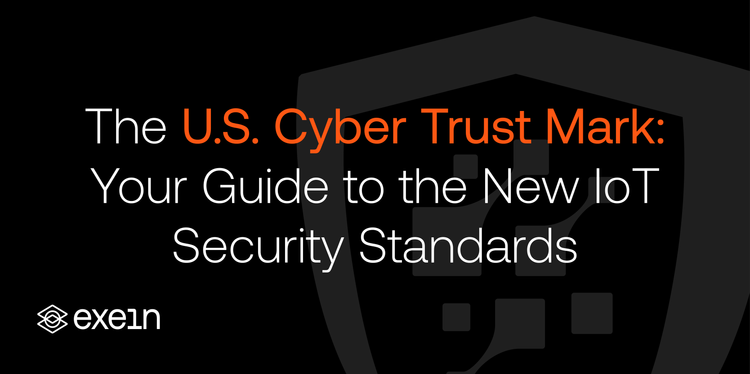Supply Chain Squeeze: Building Cyber Resilience in a Constrained Market

Supply chains are the lifeline of hardware production, especially when it comes to securing Internet of Things (IoT) devices. However, the current landscape presents unique challenges, with chip shortages and potential vulnerabilities among suppliers threatening the stability and security of these critical systems.
Additionally, the introduction of the Cyber Resilience Act (CRA) by the European Union underscores the necessity for robust cybersecurity measures across the entire supply chain.
This blog explores the intricacies of supply chain resilience and cybersecurity, offering practical tips to mitigate these risks and maintain secure hardware production.
Understanding Supply Chain Resilience Challenges
Supply chain resilience refers to the ability of a supply chain to anticipate, prepare for, respond to, and recover from disruptions. Several key challenges impact this resilience:
- Global Dependencies: Today's supply chains are highly interconnected and global. This global nature makes them vulnerable to disruptions from natural disasters, geopolitical tensions, or pandemics. When a key supplier in one region is affected, it can halt production lines across the globe.
- Complexity and Visibility: Supply chains often involve numerous tiers of suppliers, making it difficult to maintain visibility and control. This complexity can obscure potential risks and delays in response times.
- Demand Fluctuations: Sudden changes in demand, whether due to market shifts or unexpected events, can strain the supply chain. For example, the surge in demand for IoT devices during the pandemic led to severe component shortages.
- Technological Integration: While integrating advanced technologies into supply chains can enhance efficiency, it also introduces new vulnerabilities. Ensuring these technologies are secure is an ongoing challenge.
Navigating Supply Chain Cyber Challenges
The cyber aspects of supply chain resilience are equally crucial, particularly for IoT security. The main cyber challenges include:
- Supplier Vulnerabilities: Suppliers may have varying levels of cybersecurity maturity, creating weak links in the supply chain. An attack on a less secure supplier can compromise the entire network.
- Data Breaches: The exchange of sensitive data across the supply chain heightens the risk of data breaches. Protecting this data is vital to maintaining trust and security.
- Third-Party Risks: With multiple third-party vendors involved, ensuring each one adheres to rigorous security standards is difficult. Any breach in the chain can have widespread repercussions.
- Phishing and Social Engineering: Cybercriminals often target human weaknesses through phishing and social engineering attacks, exploiting employees to gain unauthorized access to systems.
The Four Pillars of Supply Chain Resilience
Building a resilient supply chain involves focusing on four key pillars:
- Visibility: Achieving end-to-end visibility is essential. Real-time insights into inventory levels, supplier statuses, and potential disruptions enable proactive risk management. Technologies like IoT sensors and blockchain can provide this transparency and traceability.
- Flexibility: The ability to adapt and respond quickly to changes is critical. This includes having alternative suppliers, flexible production processes, and logistics options to reroute shipments if necessary.
- Collaboration: Strong, collaborative relationships with suppliers and partners foster better communication and coordination. Sharing information and resources can enhance collective security efforts.
- Preparedness: Proactive risk management strategies, including regular assessments and crisis management plans, ensure the supply chain is prepared for disruptions. Continuous monitoring and improvement of security practices are also crucial.
The Impact of the Cyber Resilience Act
The Cyber Resilience Act (CRA) introduced by the European Union aims to enhance cybersecurity for products with digital elements. It has significant implications for supply chain security, particularly for IoT devices:
- Compliance Requirements: The CRA mandates that companies ensure their products meet specific cybersecurity standards. This means all entities in the supply chain must adhere to these regulations, increasing the overall security baseline.
- Enhanced Accountability: The CRA emphasizes shared responsibility for cybersecurity. Companies must ensure their suppliers and third-party vendors comply with cybersecurity requirements, fostering a more secure supply chain ecosystem.
- Risk Management: The act encourages companies to adopt a proactive approach to risk management, including regular assessments and updates to security practices. This helps in identifying and mitigating vulnerabilities before they can be exploited.
- Incident Reporting: The CRA requires timely reporting of security incidents, ensuring that breaches are quickly addressed and mitigated. This transparency helps in maintaining trust and minimizing the impact of security events.
Identifying Supply Chain Vulnerability in Cybersecurity
Supply chain vulnerability in cybersecurity refers to weaknesses or gaps within any entity in the supply chain that can be exploited by cyber attackers. These vulnerabilities can emerge from various sources:
- Inadequate Security Practices: Suppliers with insufficient cybersecurity measures are easier targets for attacks, putting the entire supply chain at risk.
- Lack of Compliance: Non-compliance with industry standards and regulations can introduce vulnerabilities. Ensuring all parties meet security guidelines is critical.
- Outdated Technology: Using outdated or unsupported technology increases susceptibility to cyber attacks. Regular updates and maintenance are necessary to mitigate this risk.
- Human Error: Employees can inadvertently create vulnerabilities through actions like falling for phishing scams or mishandling sensitive data.
Mitigating Supply Chain Risks
Given the challenges of maintaining a secure supply chain in a constrained market, companies need to adopt a multi-faceted approach to enhance their cybersecurity posture and ensure compliance with the Cyber Resilience Act.
Security Posture Assessment
One of the critical steps is conducting thorough security posture assessments of connected devices before they reach the market. This process involves a detailed analysis to identify and address any vulnerabilities that could be exploited by cyber attackers.
By ensuring that each device meets the required security standards and is free from weaknesses, companies can significantly reduce the risk of breaches and enhance overall IoT security. This proactive assessment is vital for maintaining the integrity of products and protecting sensitive data throughout the supply chain.
Runtime Threat Detection and Response
Another crucial element in mitigating risks is implementing robust runtime threat detection and response mechanisms. This involves continuous monitoring of devices to identify and block external attacks in real-time.
Effective runtime threat detection supports various platforms, from Docker containers to Real-Time Operating Systems (RTOS), ensuring comprehensive protection across different environments. By quickly detecting and responding to threats as they occur, companies can prevent potential breaches and minimize their impact, thereby maintaining a resilient and secure supply chain.
Threat Intelligence
To further bolster security, leveraging threat intelligence is essential. Providing access to comprehensive information and documentation related to device security through a centralized platform, powered by generative AI, enables companies to stay informed about the latest threats and vulnerabilities.
This intelligence helps in making informed decisions, improving security measures, and ensuring compliance with regulatory requirements. By integrating threat intelligence into their security strategy, companies can proactively address emerging threats and maintain a robust defense against cyber attacks.
In a market constrained by chip shortages and heightened cybersecurity threats, building a resilient supply chain is more critical than ever. The introduction of the Cyber Resilience Act adds an additional layer of urgency, requiring companies to adopt stringent cybersecurity measures and ensure compliance across their supply chains. By focusing on security posture assessments, runtime threat detection and response, and leveraging advanced threat intelligence, companies can enhance their cybersecurity posture and protect their IoT devices from potential vulnerabilities.
By staying proactive and vigilant, companies can turn these challenges into opportunities for strengthening their cybersecurity posture and ensuring the integrity and reliability of their IoT devices and smart solutions.
Emphasizing embedded security, robust supplier assessments, and advanced technologies will fortify the entire supply chain against potential vulnerabilities, ensuring compliance with the CRA and safeguarding against future threats.




